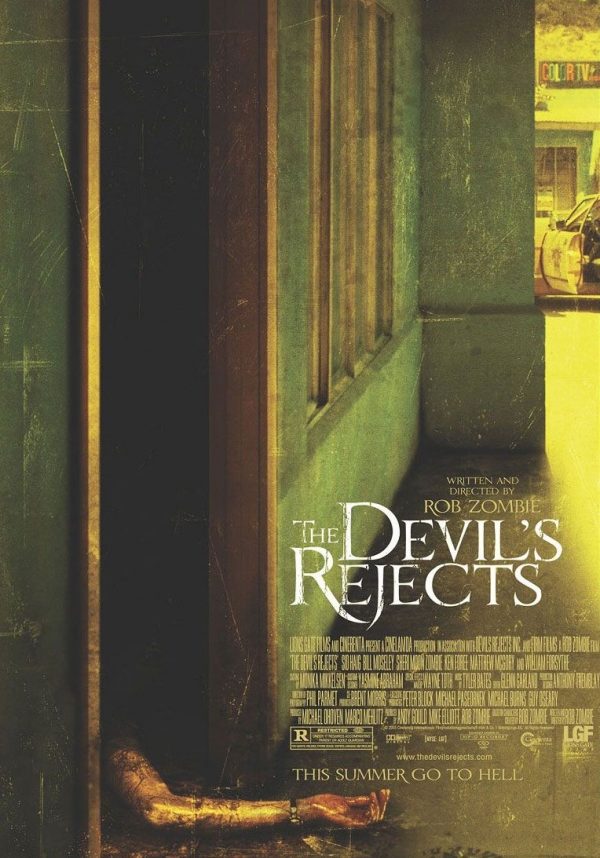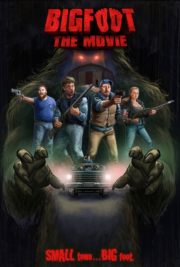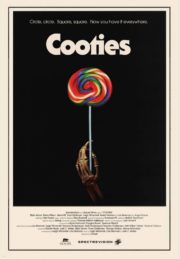The Devil’s Inside: A Journey Through Rob Zombie’s Darkest Corridors
Tutti f**kin’ fruity.” This line, from 2005’s The Devil’s Rejects, is as oddly unnerving as the film itself—a twisted symphony of horror harmonized by director Rob Zombie. Following the macabre events of House of 1000 Corpses, this sequel reintroduces us to the Firefly clan as they embark on a murderous road trip, encapsulating viewers in a gritty blend of horror, black humor, and an indefinable ’70s exploitation aesthetic. While Captain Spaulding, Otis, and Baby are antiheroes pursued by the law, the game of cat and mouse that ensues is far from your average horror fare.
Descent into Madness: Crafting a Horror Atmosphere in Rejects
The tone of The Devil’s Rejects doesn’t just tiptoe around the unsettling; it revels in it. Zombie’s approach to horror is more tangible and earthbound than spectral. A distinct sense of foreboding is maintained, primarily through the unabashed brutality of the characters and less on suspenseful build-ups. The horror here isn’t reliant on jump scares but rather on an unrelenting dive into human depravity.
Zombie’s expert use of tension is less about fear of the unknown and more about the anticipation of the inevitable—a psychological terror that springs from knowing just how far these characters can go. The unsettling is in the gritty ordinariness of the violence; there’s no fantastical escape, only a head-on collision with nastiness.
Cinematic Symphonies of Horror
The cinematography plays a supporting role in the film’s symphony of horror. Thanks to the work behind the camera, harsh desert landscapes become canvases splattered with terror. The color palette is washed-out, almost as if we’re peering through a dust-covered window into the 1970s, lending the film a documentary-style realism. Camera angles are sometimes voyeuristic, putting the viewer uncomfortably close to the horror. There’s a rawness to the visuals, but that doesn’t preclude the film from having moments of surreal beauty—contrasting the ugliness of the acts depicted.
Then there’s the soundtrack, a character in its own right, which encapsulates the era and adds a layer of eerie incongruence to the violence. It’s in the way classic rock ballads accompany scenes of torture and chaos, creating a clash that turns these songs into anthems of the upside-down world the Firefly clan inhabits. Sound effects are visceral, never allowing the audience to escape the bone-chilling reality of the Firefly’s actions.
Rejects or Reflections?: Performance and Personification of Horror
It’s the performances that add the flesh to the evil bones of the movie. The characters in The Devil’s Rejects are well-developed, harboring a complex mix of sadism and almost relatable human desires. Yet, there’s no denying their monstrosity. From Bill Moseley’s chilling portrayal of Otis to Sheri Moon Zombie’s disturbingly playful Baby, they contribute immensely to that overall sense of horror, switching between charisma and cruelty effortlessly.
Zombie’s horror elements are a tapestry of psychological torment and intense physical violence. There’s a disregard for the supernatural here—this is horror at its most tactile and corporeal. No ethereal ghost scares, no mystery—just the sheer horror of what people can do to one another. While the gore is excessive, it isn’t used as the sole method to unnerve. It’s the psychological dissection of both hunters and hunted that drives fear.
More Than Blood: Themes and Societal Commentary
Zombie is unafraid to use his characters and violent tableaus to comment on society. The thin line between so-called ‘good’ and ‘evil’ is examined; the law isn’t just and the outlaws aren’t without their strange moral codes. This duality is a tightrope walked throughout the film, pushing viewers to ask uncomfortable questions about the nature of humanity and justice.
An Oddity in Horror: The Enduring Legacy of The Devil’s Rejects
The Devil’s Rejects remains a divisive film. It’s unflinchingly brutal, morally nebulous, and intensely discomforting. Yet, its very divisiveness is a testament to the film’s effectiveness in pushing boundaries. Rather than relying on horror norms, it challenges viewers to confront the monsters within and does so with a brazen originality that stands out even among contemporary horror films.
Horror aficionados with a taste for the extreme and a deep appreciation for the genre’s history might find The Devil’s Rejects most appealing. Casual viewers, on the other hand, might be overwhelmed by the film’s graphic content and aggressive style—so viewer discretion is strongly advised.
While it flirts with the aesthetics found in works like Natural Born Killers and to some extent the relentless dread of The Texas Chainsaw Massacre, The Devil’s Rejects carves out its unique spot in the horror genre. It isn’t seeking to please the masses; instead, it commands a specific type of respect, a begrudging acknowledgement of its painstakingly crafted chaos.
In conclusion, The Devil’s Rejects is not just a gory road trip into the heart of horror; it’s a cultural critique wrapped in the skin of exploitation cinema. Rob Zombie’s sophomore film is not for the faint-hearted, nor is it trying to be. For those ready to confront the darkness—be it for thrills, for a challenging watch, or for the sake of cinematic exploration—The Devil’s Rejects may just be the next twisted turn you’re looking to take.




